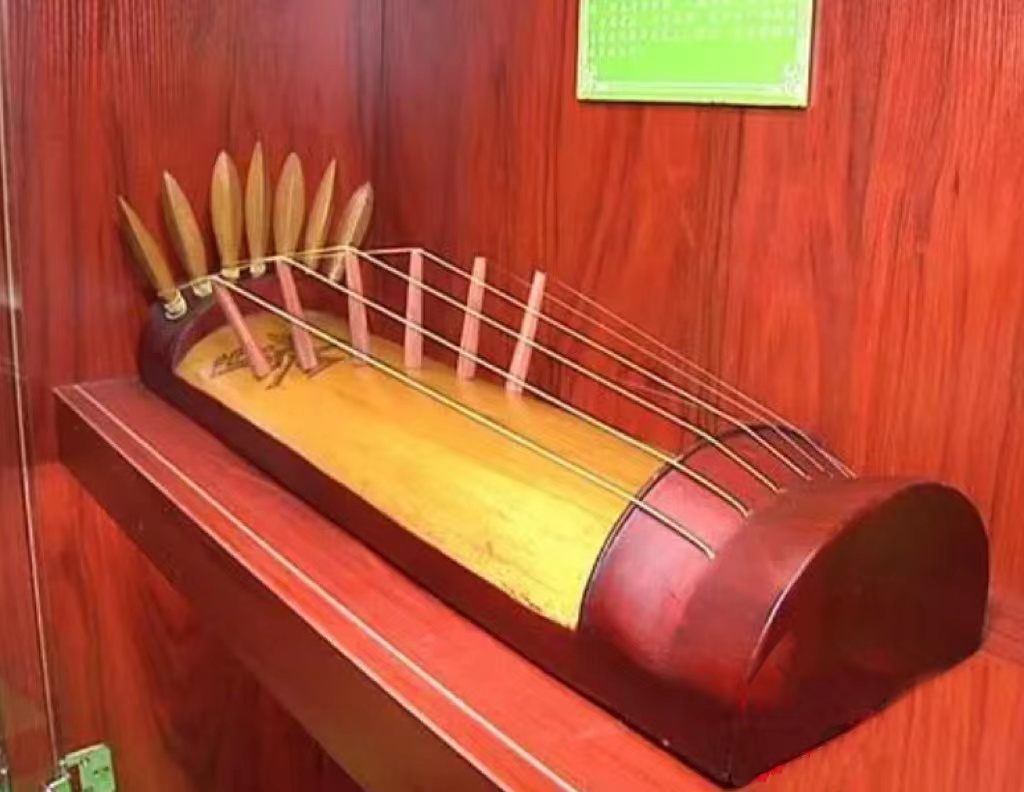Zeni's structure
Chenni is a bow and stringed musical instrument of the Zhuang people. The Zhuang language "Chen" is the pronunciation of the number seven, and "Ni" is the collective name of the Zhuang people for beating and playing musical instruments.

The shape of Chenni is simple and simple, and it is composed of a resonance box, a mountain, a peg, a column, a string and a bow.
sound box
It is the body of the piano, which is a horizontal semicircular hollow body, which is formed by gluing the panel and the bottom plate. The panel is a semi-circular arch, made of paulownia wood, mostly locally produced paulownia wood, a whole section of log is broken into two halves, the inner cavity is hollowed out with half of the log, carved into a semi-tubular circular groove, and the convex surface is planed. The light becomes a semi-circular piano surface, and the thickness of the panel is 0.7 cm to 1 cm. The bottom surface is straight, mostly made of pine and fir thin boards, with a thickness of 0.5 cm to 0.8 cm. There is a small circular hole and a large meniscus hole on the bottom plate, the two holes are opposite. After the panel and the bottom plate are glued, both ends are transparent, and there is no sound window. The piano case is 60 cm to 70 cm long, 16 cm to 17 cm wide at the bottom, and 7 cm to 9.5 cm high in the middle.
Yueshan
At 5.5cm~8cm from both ends of the piano surface, there are Yueshan (string nut) supporting strings respectively. Yueshan is made of hardwood, in the shape of a semi-circular strip, the bottom is connected to the panel, and the height of Yueshan is 1.3cm~1.5cm, The bottom width is 1.4 cm to 1.6 cm.
peg
Seven pegs are arranged vertically and equidistantly between the head of the qin and Yueshan. The pegs are made of teak and other hard and fine-grained woods, which are mostly made of wood called "faiwai" in Zhuang language. It is conical, and the shank is mostly spherical.
piano column
Also known as Qinma, it is made of wood called "Buyou" in Zhuang language, and it can also be made of plum wood, walnut wood or horn. Its shape is in the shape of an ancient Qin and Han coin or herringbone. Passing through its holes and supporting the strings on the piano surface, the seven piano columns are arranged diagonally in the middle of the panel.
strings
The seven strings of Zhang Qi were first twisted with brown silk or horsetail, and later they were made of sheep's casing strings, and then silk strings or steel strings were used. One end of the string is wound on the peg, the other end passes through the string hole, and the string is tied to a small wooden stick inside the string hole, or the string head is knotted inside the hole, and some are directly drilled on the mountain of Qinwei to tie the strings.
bow
Bamboo pieces or thin bamboos are used as bow rods, tied with horsetails as bow hairs, and the bow rods are 50 cm long.
 渝公网安备 50010702504639号
渝公网安备 50010702504639号